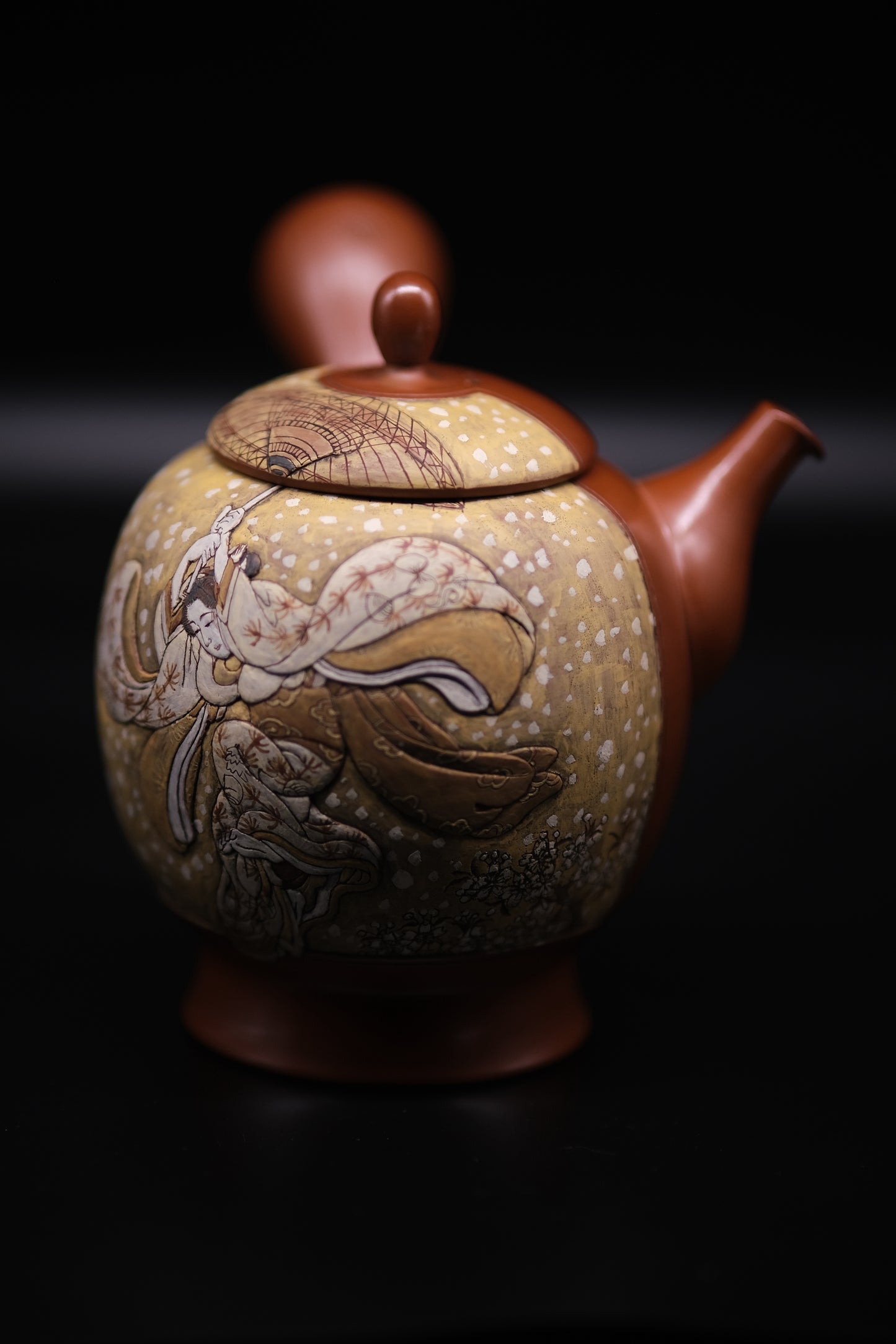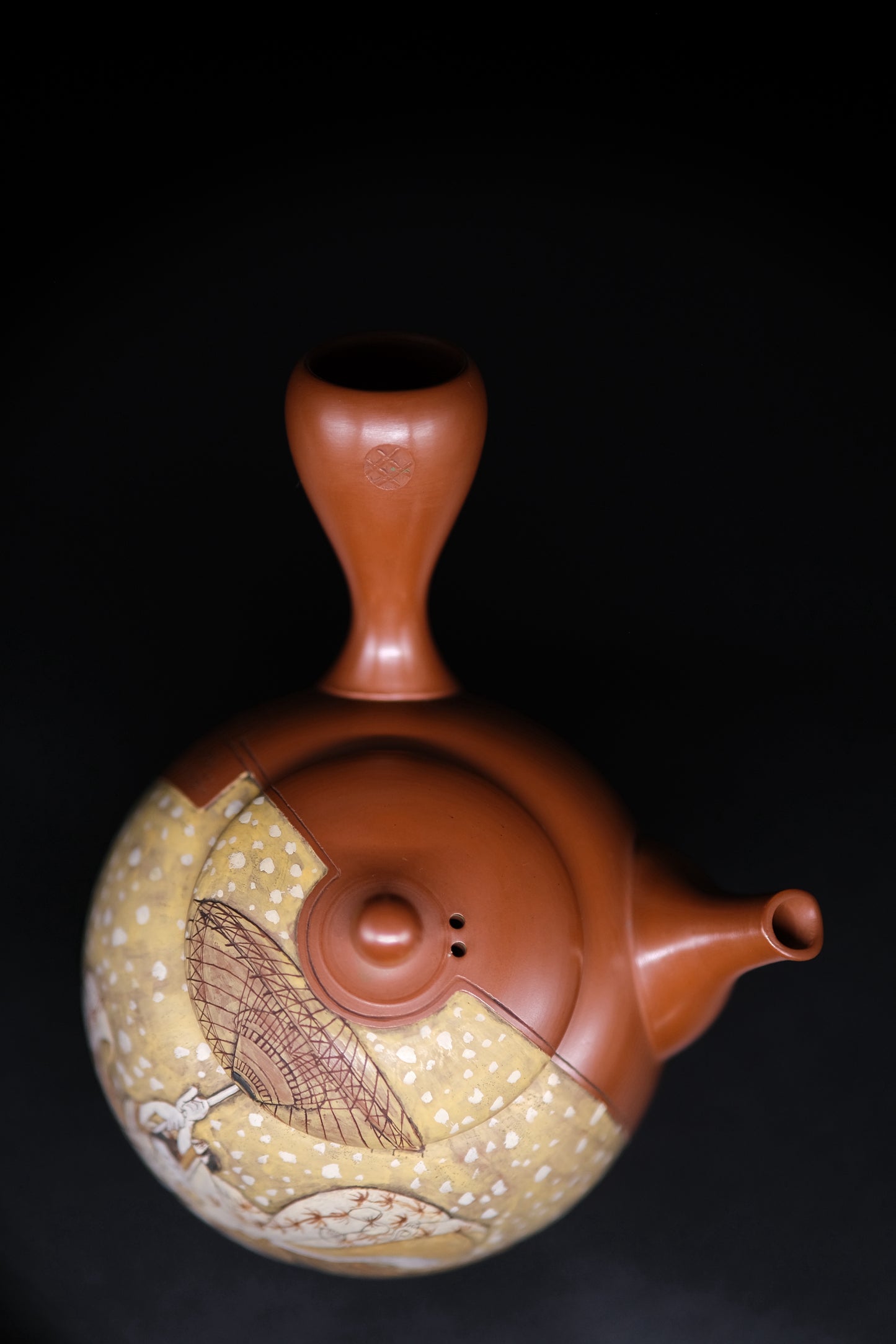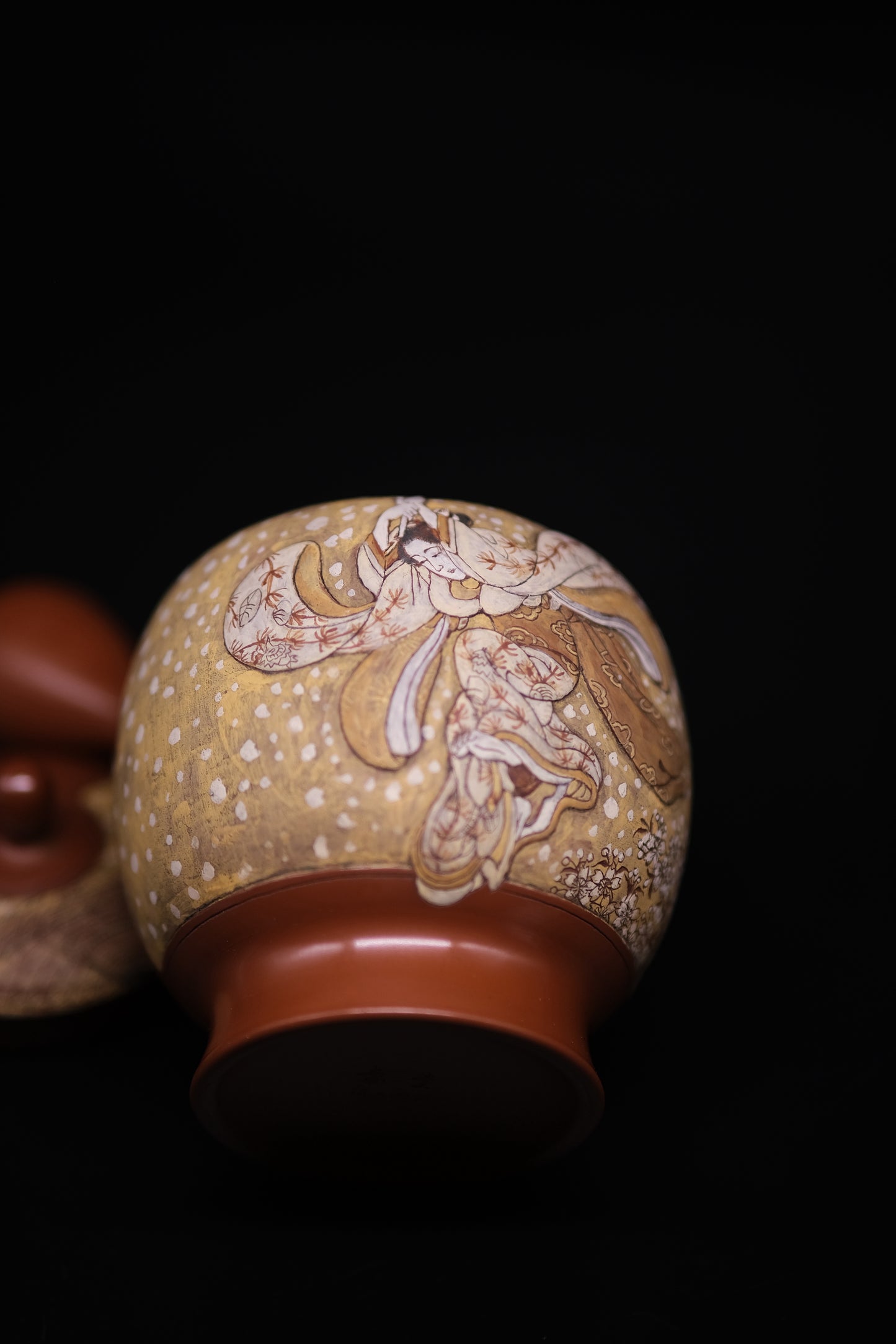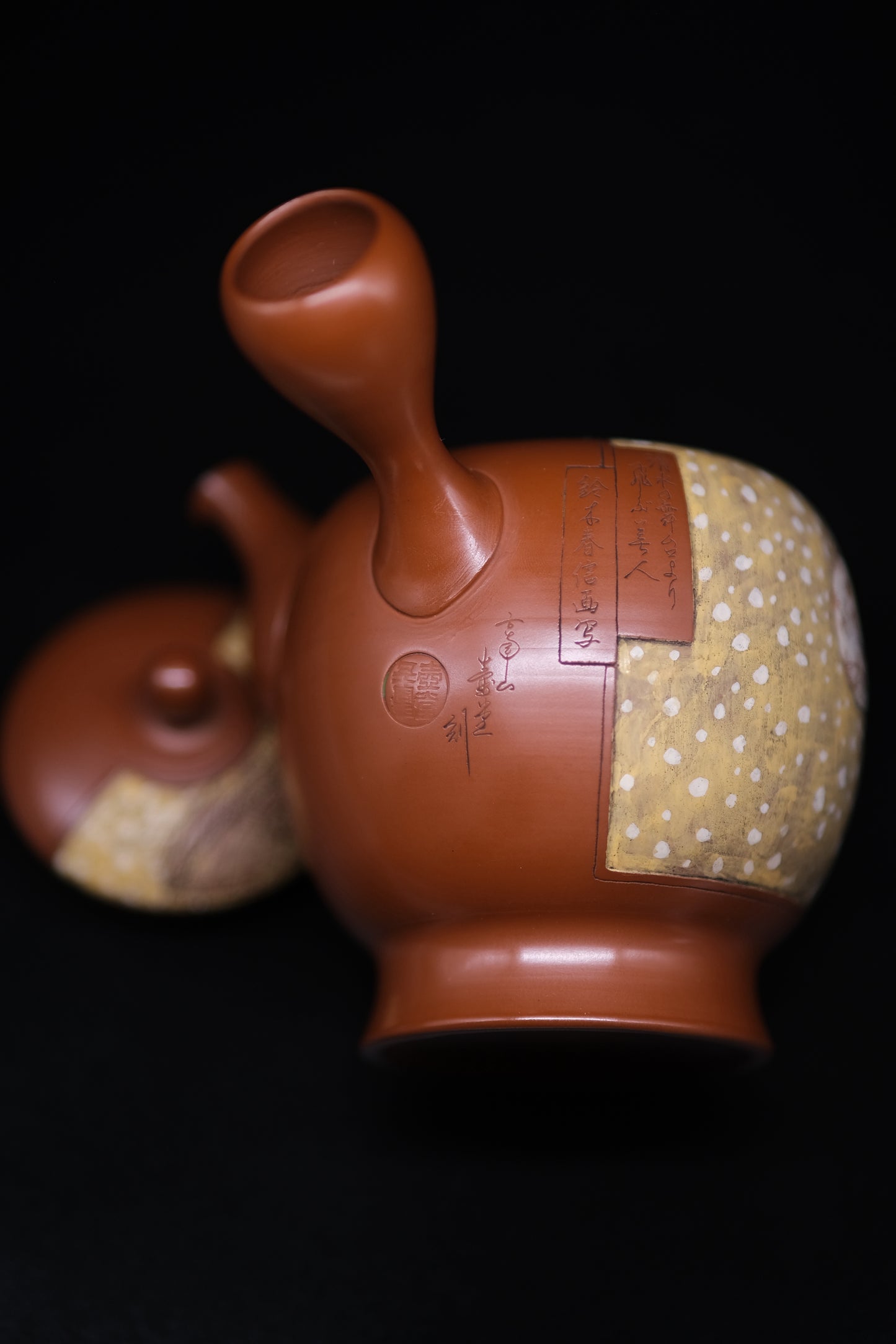究极之赏
Yoshikawa Tsubodō's 50th anniversary commemorative work "Flying Beauty"
Yoshikawa Tsubodō's 50th anniversary commemorative work "Flying Beauty"
Couldn't load pickup availability
Painting introduction:
"Girl Jumping from the Terrace of Kiyomizu-dera Temple"
Author: (Japanese) Suzuki Harunobu
Medium Edition Brocade Painting
25.9cm*18.6cm
1765 (Meiwa 2)
Collection of the National Library of Paris
This is one of Suzuki Harunobu's fine calendar paintings. Since ancient times, Japanese people have had the custom of jumping from a height to cure diseases, pray for love success, or vow to complete a mission. A high platform in Kiyomizu Temple in Kyoto has gradually become a metaphor for this custom. Kiyomizu High Platform is built on a steep cliff, about 13 meters above the ground. It is built entirely of wood with a birch-tenon structure without using a single iron nail. Kiyomizu High Platform has been a place for worshipping the main deity of Guanyin Bodhisattva since ancient times. In addition to performing gagaku, Noh, and Kabuki, it also performs performing arts such as sumo. In 1629 (the second year of the Kan'ei era), Kiyomizu High Platform was destroyed by fire and rebuilt four years later with the donation of Shogun Tokugawa Iemitsu.
The saying of "jumping from the high platform of Kiyomizu Temple" was formed in the Edo period. It is said that the main reasons are due to two aspects. First, Kiyomizu Temple is a temple that worships Guanyin extremely, especially the belief that the source of Otowa Falls is connected to the "Pure Land of Potala Mountain" on the other side of the South China Sea far away from India. Therefore, at that time, there was a saying among the people that "Kiyomizu Temple is the Pure Land of Potala Mountain, and if you can jump from that high platform, you can go to the Pure Land of Bliss." It is said that if you can still breathe and stand up after jumping from the Kiyomizu high platform, your wish will come true. There is even a legend that even if you die after jumping from the Kiyomizu high platform, you can become a Buddha peacefully.
On the other hand, around 1690 (mid-Genroku), the Kabuki play "Seigen Sakurahimemono" became popular. The plot is about a monk from Kiyomizu Temple, Seigen, who has a crush on Princess Sakurahime and boldly confesses his love to her, but Sakurahime flees after hearing the news. During the performance, the actor who plays Sakurahime suddenly opens an umbrella and jumps off the stage into the audience. This amazing performance became an inducement, and combined with the traditional factors of " jumping off the high platform can make your wish come true " and " you can go to paradise " , the saying of " jumping off the high platform of Kiyomizu " was formed. The saying that "some people actually jumped off and made their wishes come true" gradually spread, and many people believed this rumor and really jumped. According to the "Kiyomizu Temple Jujuin Diary" discovered in Kiyomizu Temple in the 1990s , the actual number of people who jumped off in the Edo period was 150 to 180, and about 85% survived. Even today, Japanese people swear to " jump off the high platform of Kiyomizu Temple " to show their determination.
The young woman jumping from a height in the picture is praying for a successful love relationship. She holds a special umbrella to protect herself. The shell pattern on her clothes fluttering in the wind implies the words "big two, three, five, six, eighty", which means the big month of that year.
Share







